SAP BAPI
Filter By
Browse By
- SAP Analytics and AI
- SAP Application Development and Integration
- All SAP Application Development and Integration
- SAP ABAP
- SAP ABAP Development Tools
- SAP ABAP Test Cockpit
- SAP API Management
- SAP BAPI
- SAP Basis
- SAP BRF
- SAP Business Application Studio
- SAP CMS
- SAP Design Studio
- SAP Development Tools
- SAP DevOps
- SAP EAI
- SAP EDI
- SAP Extension Suite
- SAP Fiori
- SAP Fiori Elements
- SAP Integration Suite
- SAP Low Code Application Development
- SAP Low Code Automation
- SAP Netweaver
- SAP Release Management
- SAP UI5
- SAP Web Application Server
- SAP Web IDE
- SAP Business Process Management
- SAP Center of Excellence
- SAP CIO
- SAP Customer Experience
- SAP Data and Data Management
- All SAP Data and Data Management
- SAP BW
- SAP BW/4HANA
- SAP Crystal Reporting
- SAP Data Archiving
- SAP Data Center
- SAP Data Governance
- SAP Data Integration
- SAP Data Migration
- SAP Data Quality
- SAP Data Services
- SAP Data Strategy
- SAP Data Visualization
- SAP Data Warehouse Cloud
- SAP DMS
- SAP Document Control
- SAP EIM
- SAP ETL
- SAP ETL Tools
- SAP HANA
- SAP HANA Administration
- SAP HANA Deployment Infrastructure
- SAP HANA Studio
- SAP Master Data
- SAP Master Data Governance
- SAP MDM
- SAP Enterprise Architect
- SAP Enterprise Asset Management
- SAP ERP
- SAP Finance
- All SAP Finance
- SAP Accounting
- SAP AR AP
- SAP Asset Accounting
- SAP Billing Systems
- SAP BPC
- SAP BRIM
- SAP Cash Management
- SAP Central Finance
- SAP Controlling
- SAP COPA
- SAP Cost Center Accounting
- SAP e-invoicing
- SAP FICO
- SAP Finance Automation
- SAP Financial Closing Cockpit
- SAP Financial Consolidation
- SAP Financial Planning
- SAP FX Risk
- SAP General Ledger
- SAP Global Tax Management
- SAP Hyperion
- SAP Order to Cash
- SAP Payment Processing
- SAP Profitability Analysis
- SAP Rebate Management
- SAP S/4HANA Finance
- SAP Universal Journal
- SAP Governance Risk and Compliance
- SAP Human Capital Management
- SAP Intelligent Technologies
- SAP Platform and Technology
- All SAP Platform and Technology
- SAP Business Technology Platform
- SAP Cloud Connector
- SAP Cloud Integration Platform
- SAP Cloud Migration
- SAP Cloud Platform
- SAP Cloud Providers
- SAP Cloud Strategy
- SAP Container Platform
- SAP Digital Asset Management
- SAP Digital Integration Hub
- SAP Digital Signature
- SAP HANA Enterprise Cloud
- SAP HEC
- SAP Hyperscalers
- SAP Infrastructure
- SAP Messaging
- SAP Smart Forms
- SAP Quality and Testing
- SAP Security
- SAP Spend Management
- SAP Supply Chain Management
- All SAP Supply Chain Management
- SAP APO
- SAP Asset Management
- SAP Business Network
- SAP Digital Manufacturing Cloud
- SAP Digital Twin
- SAP EWM
- SAP IBP
- SAP Inventory Management
- SAP Label Printing
- SAP Logistics
- SAP Manufacturing
- SAP Manufacturing Automation
- SAP MES
- SAP MII
- SAP MM
- SAP MRO
- SAP MRP
- SAP Order Management
- SAP Plant Maintenance
- SAP PLM
- SAP Production Planning
- SAP S&OP
- SAP SD
- SAP SPM
- SAP Supply Chain Planning
- SAP Track and Trace
- SAP Transportation Management
- SAP System Administration
SAP BAPI, a Tested Way to Integrate with SAP
Interoperability of software applications has become a critical requirement for business processes ever since SAP evolved from being a monolith to becoming the central core of an increasing number of third-party solutions. Many top vendors for specialized business applications offer ways for their software to work in tandem with SAP ECC and SAP Business Suite.
SAP itself has enabled this through its SAP Business Application Programming Interfaces (SAP BAPIs). These are standard interfaces that enable software vendors to integrate their software into SAP Business Suite. In programming terms, a standard BAPI is a Business Object type that encapsulates a set of methods and parameters, with an a “Extension” parameter to pass custom data that is specific to a company. For example, standard BAPI for purchase orders and sales orders can be enhanced.
SAP BAPI, a Tested Way to Integrate with SAP
Interoperability of software applications has become a critical requirement for business processes ever since SAP evolved from being a monolith to becoming the central core of an increasing number of third-party solutions. Many top vendors for specialized business applications offer ways for their software to work in tandem with SAP ECC and SAP Business Suite.
SAP itself has enabled this through its SAP Business Application Programming Interfaces (SAP BAPIs). These are standard interfaces that enable software vendors to integrate their software into SAP Business Suite. In programming terms, a standard BAPI is a Business Object type that encapsulates a set of methods and parameters, with an a “Extension” parameter to pass custom data that is specific to a company. For example, standard BAPI for purchase orders and sales orders can be enhanced.
BAPIs are technically implemented using RFC (Remote Function Call) enabled function modules inside SAP systems. Such a trusted RFC connection allows creation of trusted-trusting relationships between systems, both SAP and non-SAP. BAPIs also can be called through ALE/IDoc (Application Link Enabling/Intermediate Document) technology.
BAPIs are defined in the Business Object Repository (BOR) as methods of SAP Business Objects that perform specific business tasks. They allow integration at the business level, not technical level. This makes it much easier to find suitable BAPIs compared to non-BAPI-based function modules.
There are different ways in which application developers may integrate workflows:
- Integration of third-party applications with an SAP System.
- Integration of custom business applications with an SAP System.
- Integration of additional SAP components into the SAP system.
- New user interfaces to an SAP System for occasional SAP users.
- Web-based access to an SAP System through Internet or Intranet applications.
- Mobile, cloud or IoT (Internet of Things) access to an SAP system.
Here is one example of how SAP BAPI is used for reporting.
As many SAP customers move to SAP S/4HANA in the cloud, one of the most vital requirements is to integrate existing or new on-premise applications with SAP S/4HANA. Released BAPIs can be used to connect SAP S/4HANA Cloud with SAP on-premise applications only.
For other integrations, such as cloud-to-cloud and cloud with non-SAP solutions, SAP recommends using Public APIs which use OData (Open Data Protocol) or SOAP (Simple Object Access Protocol), Business event handling and other SAP Cloud products.
There are many sophisticated ways that SAP solutions can be integrated with other applications. Boomi has an intelligent iPaas (Integration Platform as a Service) with many connectors that seamlessly integrate workflows.
While SAP BAPI has many advantages, SAP customers have to assess the right set of intelligent approaches for their landscape based on their needs.
654 results
-

A Quick Guide to Migrating Six Procurement Data Objects in Your SAP Project
Published: 29/June/2012
Reading time: 13 mins
Learn how to automate the uploading of procurement objects in your SAP project using the SAP Legacy System Migration Workbench. Walk through the steps for uploading data for the Purchase Requisition (PReq) object, including how to prepare the data for uploading. Then learn how to easily apply the process to your other procurement objects: purchase...…
-

Publish Prices Automatically with a Custom BAPI Program
Published: 15/October/2007
Reading time: 11 mins
In six steps you can set up a custom pricing publishing program that allows users to see the most current prices for the company’s goods. Then see how to customize the program and the output information it provides. Key Concept A Business Transaction Event (BTE) triggers processes based on the occurrence of a particular event...…
-

Currencies and Currency Conversions in BAPI Programming
Published: 15/September/2001
Reading time: 2 mins
Almost all BAPI-based applications have to deal with currencies. Proper handling of the currency fields in a BAPI requires an in-depth understanding of how currency amounts are represented in SAP. This article discusses how BAPIs should treat currency amounts, how to handle BAPIs that violate the rules and return “incorrect” amounts, how to use the...…
-
-

Excerpt: The SAP CRM Data Model
Published: 12/July/2013
Reading time: 10 mins
“SAP CRM: Technical Principles and Programming,” by Stephen Johannes, provides developers and consultants with the technical foundation to be more effective on CRM projects and to increase the success of CRM implementations. For more information about the book, visit its page on insiderBOOKS.com SAP has several major data objects that are key to the application:...…
-

Need to Understand a BAPI’s Parameters? Test-Drive the BAPI Inside SAP!
Published: 15/November/2000
Reading time: 2 mins
To write a BAPI-enabled application, you must understand all the relevant parameters of every BAPI you want to use in your application. This article shows you how to test-drive a BAPI inside R/3’s test environment in order to accelerate the learning process. Without writing source code, you can find out which parameters, in which combination,...…
-

Making Sense of ABAP-Based Interface Technologies in the Modern IT Landscape
Published: 05/June/2012
Reading time: 15 mins
Survey modern ABAP-based interface technologies supported by SAP NetWeaver Application Server ABAP (AS ABAP). Look at the pros and cons of each technology and identify typical usage scenarios. Develop a decision table that can be used to determine when and where to apply specific interface technologies. Key Concept In the past several years, the SAP...…
-

Quick Tip: Best Practices for Designing SAP BW BEx Queries and a Comparison of Connection Options
Published: 15/February/2017
Reading time: 8 mins
This checklist helps you learn SAP BW BEx Query design best practices to enable you to build performance-optimized SAP BW BEx Queries. Also see a quick comparison of the three SAP BusinessObjects connection types: Business Intelligence Consumer Services (BICS), relational, and Business Application Programming Interface (BAPI) connections. This quick tip also helps you decide which…
-
-

Create Fail-Safe Composite Applications by Implementing Foolproof Error-Handling Mechanisms in SAP MII
Published: 27/March/2015
Reading time: 32 mins
Discover how to handle various error scenarios while developing composite applications in SAP Manufacturing Integration and Intelligence (SAP MII). Learn the new exception handling and transaction handling techniques in SAP MII. Key Concept Exception handling and SQL transaction support are two techniques that are part of the newer versions of SAP Manufacturing Integration and Intelligence...…
-

Asset Migration with SAP S/4HANA Finance
Published: 20/May/2016
Reading time: 6 mins
With S/4HANA learn how to use new transaction codes to complete asset migration either manually via transaction code ABLDT or automatically using a Business Application Programming Interface (BAPI). Key Concept A new design in SAP S/4HANA Finance enables reconciliation between Asset Accounting (FI-AA) and the SAP General Ledger. To reinforce this, SAP has changed the...…
-

Automate All Your Goods Movement in SAP Inventory Management Using a Single Program
Published: 03/February/2012
Reading time: 10 mins
Learn the step-by-step process of how to use a standard BAPI program to perform all mass transactions in SAP Inventory Management. With small variations in settings, you can automate all the goods movement-related transactions in SAP ERP Central Component (SAP ECC) via a single program to perform mass upload and updates. Learn how to use...…
Featured Experts
-

Clifford Seckman
President, Virginia Software Group, Inc.
-

Esteban Wilder
Partner, WAE Solutions LLC
-

Akash Kumar
Associate General Manager, HCL
Become a Member
Unlimited access to thousands of resources for SAP-specific expertise that can only be found here.
Upcoming Events
Related Vendors
Your request has been successfully sent

